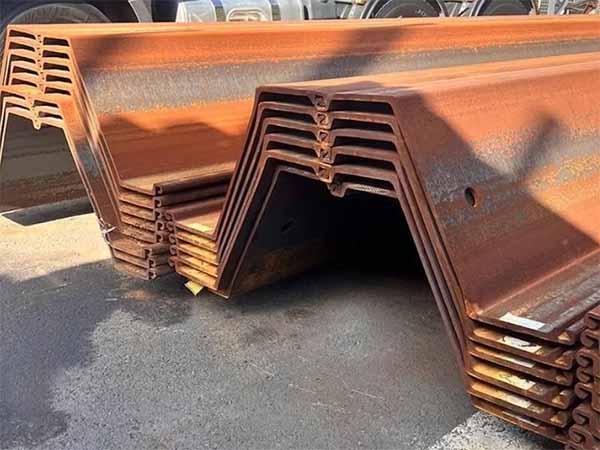In various foundation and retaining wall projects, the selection of
sheet piles is a core factor affecting the safety, durability, and economy of the project. Whether it's deep foundation pits, marine structures, cofferdams, or slope protection, a comprehensive consideration of design requirements and site conditions is necessary to make the optimal decision.
This article will elaborate on the key evaluation dimensions and methods to be followed when selecting sheet piles from two aspects.

1. Functional requirements based on project design
The engineering design determines the performance standards that sheet piles must meet during the service phase, mainly including the following aspects:
1.1 Load conditions and structural bearing capacity
• Earth pressure, hydrostatic pressure, additional loads, and dynamic effects need to be evaluated.
• High-strength steel, such as S355GP, S390GP, S430GP, or ASTM A572 Gr.50/Gr.60, should be selected for high bending stress applications.
• For deep foundations or marine engineering, models with strong bending bearing capacity and good fatigue resistance should be given priority.
• Hot-rolled sheet piles generally offer superior structural performance due to their tight interlocking and uniform cross-section.
1.2 Required burial depth
• Burial depth is influenced by soil type, groundwater level, excavation depth, and safety factor.
• Deep excavation or soft soil layers: U-shaped or Z-shaped hot-rolled piles with high section modulus are recommended.
• Shallow excavation: Lightweight cold-formed sheet piles can be used.
1.3 Waterproofing and seepage prevention requirements
• Groundwater control is often a critical design objective.
• Strict waterproofing: Hot-rolled sheet piles with tight interlocking are recommended, which can be combined with sealants, asphalt, or welded joints.
• Moderate seepage prevention: Cold-formed steel sheet piles with interlocking sealant can be used.
1.4 Corrosive environments
• Corrosion directly affects structural lifespan, especially in marine or polluted waters.
• Highly corrosive environments: Corrosion-resistant steel should be selected, or coatings and cathodic protection should be implemented.
• General soil environments: Ordinary carbon steel is sufficient.
1.5 Reusability
• For temporary projects (such as cofferdams), ease of assembly and disassembly, as well as durability, must be considered.
• Hot-rolled piles are recommended due to their high interlock strength and ability to withstand multiple uses.
• Straight-web cross-sections facilitate driving and extraction operations.
2. Construction condition constraints
Construction conditions determine whether the selected pile type can be installed smoothly and efficiently:
2.1 Soil and geological conditions
• Dense sand, gravel, or pebble layers: Hot-rolled piles are recommended, with pre-drilling if necessary.
• Soft clay or silt: Cold-formed steel sheet piles can be used.
• Rock formations: Requires pile tip protection or composite wall structures (such as H-beams + sheet piles).
2.2 Pile driving equipment capabilities
• Vibratory hammer: Suitable for most U/Z-type hot-rolled piles and cold-formed piles.
• Hydraulic pile driver: Suitable for noise-sensitive urban areas.
• Impact hammer: Suitable for hard soil or high-energy pile driving requirements.
• When equipment capacity is limited, lightweight pile types or pre-drilled processes can be selected.
2.3 Construction period and budget
• Rapid construction: Standardized hot-rolled profiles are recommended, as they offer secure interlocking and convenient installation.
• Cost-sensitive projects: Cold-formed steel sheet piles can be considered, but their structural performance and waterproofing capabilities must be verified.
Summary
The selection of steel sheet piles is not merely a matter of shape or material choice, but a systematic engineering project integrating structural mechanics, geomechanics, and construction technology. A systematic evaluation of multiple factors, including load, corrosion, burial depth, geology, equipment, and budget, can help users select an ideal pile type that combines safety, construction efficiency, and long-term performance.
